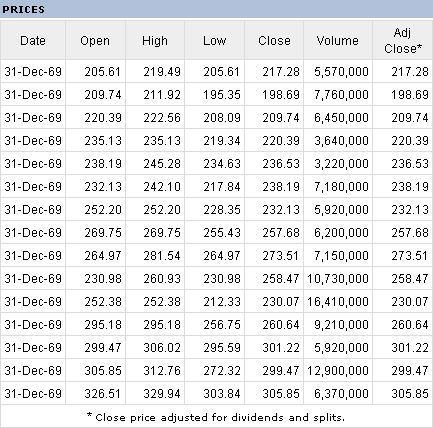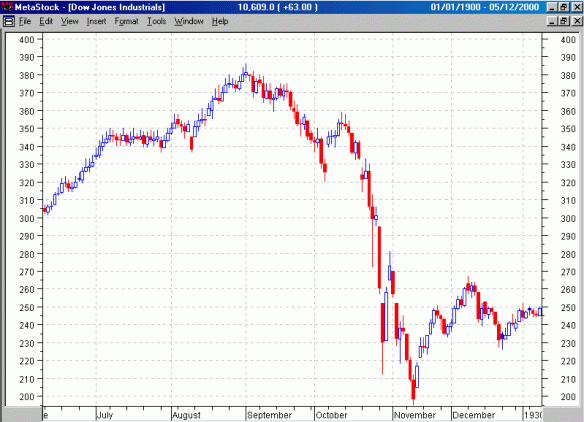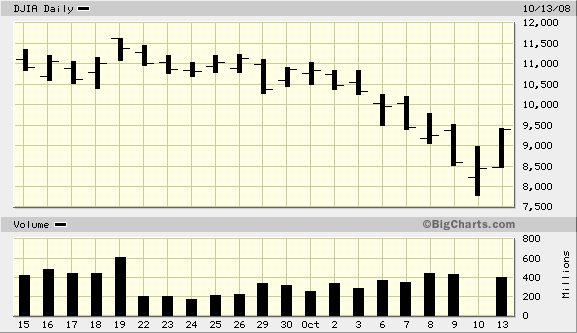The essence of why bailouts will only deepen our problems is that real credit cannot be created out of thin air. This counterfeit operation is what caused the bubble to begin with, and by trying to put out a fire with gasoline, Bernanke, Congress and Obama are going to burn down the whole city.
Frank Shostak, the Chief Economist at M.F. Global, knows a thing or two about economics, which is not something you can say about many of today’s economists. The Mises Institute website publishes this essay of his on credit, which illustrates the critical identity between savings and investment, and the proper role of banks in an honest system.
Central-bank policy makers have said that the key for economic growth is a smooth flow of credit. For them (in particular, for Bernanke) it is credit that provides the foundation for economic growth and raises individuals’ living standards. From this perspective, it makes a lot of sense for the central bank to make sure that credit flows again.
Following the teachings of Friedman and Keynes, it is an almost-unanimous view among experts that if lenders are unwilling to lend, then it is the duty of the government and the central bank to keep the flow of lending going. …
It is true that credit is the key for economic growth. However, one must make a distinction between good credit and bad credit. It is good credit that makes real economic growth possible and thus improves people’s lives and well-being. False credit, however, is an agent of economic destruction and leads to economic impoverishment.
Good Credit versus Bad Credit
There are two kinds of credit: that which would be offered in a market economy with sound money and banking (good credit); and that which is made possible only through a system of central banking, artificially low interest rates, and fractional reserves (bad credit).
Banks cannot expand good credit as such. All that they can do in reality is to facilitate the transfer of a given pool of savings from savers (lenders) to borrowers. To understand why, we must first understand how good credit comes to be and the function it serves.
Consider the case of a baker who bakes ten loaves of bread. Out of his stock of real wealth (ten loaves of bread), the baker consumes two loaves and saves eight. He lends his eight remaining loaves to the shoemaker in return for a pair of shoes in one week’s time. Note that credit here is the transfer of “real stuff,” i.e., eight saved loaves of bread from the baker to the shoemaker in exchange for a future pair of shoes.
Also, observe that the amount of real savings determines the amount of available credit. If the baker had saved only four loaves of bread, the amount of credit would have only been four loaves instead of eight.
Note that the saved loaves of bread provide support to the shoemaker, i.e., they sustain him while he is busy making shoes. This means that credit, by sustaining the shoemaker, gives rise to the production of shoes and therefore to the formation of more real wealth. This is a path to real economic growth.
Money and Credit
The introduction of money does not alter the essence of what credit is. Instead of lending his eight loaves of bread to the shoemaker, the baker can now exchange his saved eight loaves of bread for eight dollars and then lend those dollars to the shoemaker. With eight dollars, the shoemaker can secure either eight loaves of bread (or other goods) to support him while he is engaged in the making of shoes. The baker is supplying the shoemaker with the facility to access the pool of real savings, which among other things includes eight loaves of bread that the baker has produced. Note that without real savings, the lending of money is an exercise in futility. …
The existence of banks does not alter the essence of credit. Instead of the baker lending his money directly to the shoemaker, the baker lends his money to the bank, which in turn lends it to the shoemaker. …
Despite the apparent complexity that the banking system introduces, the act of credit remains the transfer of saved real stuff from lender to borrower. Without the increase in the pool of real savings, banks cannot create more credit. At the heart of the expansion of good credit by the banking system is an expansion of real savings.
Now, when the baker lends his eight dollars, we must remember that he has exchanged for these dollars eight saved loaves of bread. In other words, he has exchanged something for eight dollars. So when a bank lends those eight dollars to the shoemaker, the bank lends fully “backed-up” dollars so to speak.
False Credit Is an Agent of Economic Destruction
Trouble emerges however if, instead of lending fully backed-up money, a bank engages in fractional-reserve banking, the issuing of empty money, backed up by nothing.
When unbacked money is created, it masquerades as genuine money that is supposedly supported by real stuff. In reality, however, nothing has been saved. So when such money is issued, it cannot help the shoemaker, since the pieces of empty paper cannot support him in producing shoes — what he needs instead is bread. But, since the printed money masquerades as proper money, it can be used to “steal” bread from some other activities and thereby weaken those activities.
This is what the diversion of real wealth by means of money “out of thin air” is all about. If the extra eight loaves of bread aren’t produced and saved, it is not possible to have more shoes without hurting some other activities — activities that are much higher on the priority lists of consumers as far as life and well-being are concerned. This in turn also means that unbacked credit cannot be an agent of economic growth.
Rather than facilitating the transfer of savings across the economy to wealth-generating activities, when banks issue unbacked credit they are in fact setting in motion a weakening of the process of wealth formation. It has to be realized that banks cannot relentlessly pursue unbacked lending without the existence of the central bank, which, by means of monetary pumping, makes sure that the expansion of unbacked credit doesn’t cause banks to bankrupt each other.
We can thus conclude that, as long as the increase in lending is fully backed up by real savings, it must be regarded as good news, since it promotes the formation of real wealth. False credit, which is generated “out of thin air,” is bad news: credit which is unbacked by real savings is an agent of economic destruction.
Fed and Treasury Actions Only Make Things Worse
Neither the Fed nor the Treasury is a wealth generator: they cannot generate real savings. This in turn means that all the pumping that the Fed has been doing recently cannot increase lending unless the pool of real savings is expanding. On the contrary, the more money the Fed and other central banks are pushing, the more they are diluting the pool of real savings. …
If the pool of real savings is still growing, then doing nothing (and allowing the interest rate to reflect reality) will allow the recession to be short lived and economic recovery to emerge as fast as possible. (At a higher interest rate, various bubble activities will go belly up. As a result, more real savings will become available to wealth generators. This in turn will work towards the lowering of interest rates.)
We suggest that decades of reckless monetary policies by the Fed have severely depleted the pool of real savings. More of these same loose policies cannot make the current situation better. On the contrary, such policies only further delay the economic recovery.
By impoverishing wealth generators, the current policies of the government and the Fed run the risk of converting a short recession into a prolonged and severe slump.
If Princeton and the rest weren’t run by fools and knaves, this is the kind of thing they would be teaching, not Bernanke’s brand of institutionalized theft.
I recommend reading Shostak’s whole essay. Click around the Mises site while you’re there. It is a wonderful resource for real economics, the kind that can make you money. The Rothhbard and Mises files would be good places to start.










